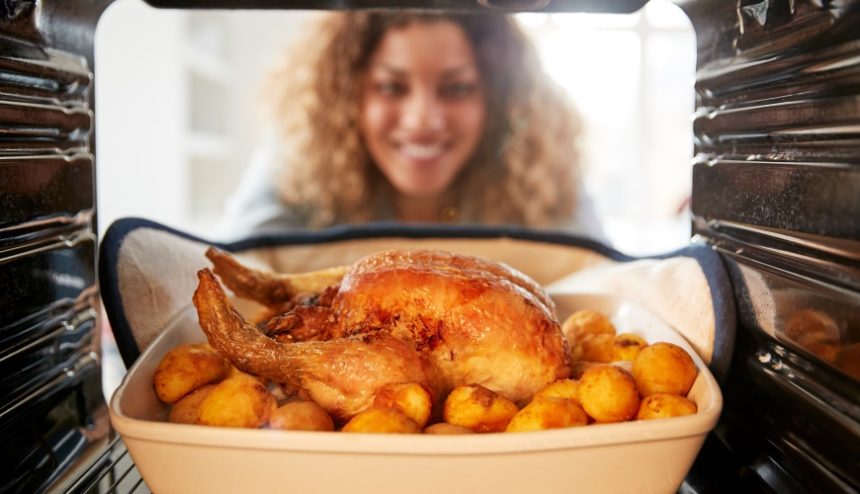Meal planning often comes down to what looks good when we hit the grocery store after work. Since we’re already hungry, it usually doesn’t end well. You might discover that your cart is filled with too many convenience foods, junk foods, or the things the kids talk you into if you’re not shopping solo!
In addition to making a detailed grocery shopping list, and sticking to it, here are a few meal-planning ideas to help save time, save your budget, and promote healthy eating choices!
Pro tip: Remember that when freezing foods to use later, cool the unsealed container or freezer bag in the refrigerator before freezing.Double (or Triple!) the Deliciousness.
Double or triple the recipe—eat one now and save one (or more) for later. For example, roast two or three chickens in one large roasting pan with cubed potatoes and carrots. Enjoy one chicken and the veggies for one meal (depending on how many you’re feeding), then debone and shred the rest. After thoroughly cooling the shredded chicken in the refrigerator, scoop about 2 cups into freezer bags or containers and freeze. Use it later in tacos, chicken salad, quesadillas, soups, hotdishes, or other family favorites. The bones and bits can even be boiled down for stock or soup broth.
Mix it up!
Don’t let your leftovers die a slow death pushed to the back of the refrigerator or stuck in the freezer to be tossed out months later. Mix up your leftovers! Have chili for one meal and then use it later as a potato topper for a baked potato bar. Even make a double batch of chili and put some in the freezer. If you have leftover chicken or other meat, use it in sandwiches, pasta, or a salad.
Stock up!
As much as possible, try to have a well-stocked pantry with basic items: cans of beans and tomatoes, pasta, pasta sauces, quick-cooking quinoa, and canned veggies, fish, or chicken. If you’re in a rush to make a meal, these and other staples will help you create a balanced meal in a hurry.
Save Time & Energy.
If you’re roasting a chicken or another entree that doesn’t take up the whole oven, fill a sheet pan with veggies to roast at the same time. Enjoy some for dinner and freeze the rest for later. Don’t crowd too much into one freezer bag or container. Depending on how many people you generally feed, it’s best to put no more than four servings into the bag to freeze.
Get Preppy With It!

Pro Tip: If meal prepping seems overwhelming to you, try setting a timer to challenge yourself to complete it in a short amount of time. You’d be amazed at what you can get done in 45 minutes when focusing on a task. Make this time enjoyable by playing your favorite song list and think of your time spent cooking as “me time” or “family time.”
Prep ingredients once and use them later. When you bring home a bagful of veggies, it’s tempting just to shove them into the refrigerator—telling yourself you’ll clean them later. Instead, get in the habit of prepping veggies when you come home from the store to cut down on meal prep later. Plus, cleaned and ready-to-eat carrots or celery sticks are a handy and healthy snack. Place them in baggies or clear containers in plain sight, so the family (and you!) have the option to choose them over sugary or unhealthy snacks. You can also use the veggies later, as a side dish or in a hotdish or stew.
The American Heart Association is an excellent resource for healthy eating and meal planning ideas. If you want to lose a few pounds, using these 4 Simple Nutrition Tips to Drop Excess Winter Weight may help when planning weekly meals. Also, talk to your primary care provider at Glacial Ridge Health System if you have concerns about your or your family’s diets or eating habits.


